Ours is an age of always on, instant communication. The Internet brings the news of the world, often with live and on-the-scene citizen reporting. It seems like news is always traveling faster and faster, sometimes beating the truth to its destination. Our information is immediate, comprehension and context the laggard.
I asked my parents, who were both just barely teens at the time of Pearl Harbor, how they'd learned of the attack. I'd expected a day's delay, with perhaps a town crier, or some sort of gigantic spinning newspaper like you see in the old newsreels. Maybe at best news arrived later that same night, with a megaphone on a jeep, like some kind of camouflage mitzvah tank proclaiming the end-of-days.
That Sunday morning in Kohala, my Dad had gone pheasant hunting with a friend in the rolling green mountains above the sugar cane fields. In Honaunau, my Mom and her siblings worked in the family coffee field, moving quickly from tree to tree over the rocky and uneven terrain, filling baskets with coffee "cherry" one by one.
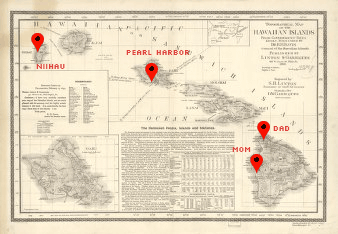
It was a typically clear morning in Hawaii, scattered clouds and sunny, and until a little before 8 am, it was just a Sunday.
Invisible Messages
I think there are pretty much only a few scenarios where you're going to want to seek out a rock on fire in the middle of a giant ocean to open your business. Maybe selling rum to whalers, or to trade salvation and weapons for real estate (that's a super winning proposition). The other one might be using those rocks as a model of the world to prove you can send messages invisibly, through thin air.
Hawaii was a logical choice as a test bed for radio: coral reefs and rough channel currents made laying wires between the islands a difficult task. At the time messages were still carried from island to island the way they were before the arrival of Captain Cook — by boat, delivered by hand. In 1898, official news that the US Congress pwned voted to overthrow annex the independent nation took a full four days to arrive from the mainland.
Guglielmo Marconi (long credited as the city building, mamba-playing inventor of radio) and his corporate powerhouse, the Marconi Wireless Telegraph Company, chose the Hawaiian islands as a proving ground for their technology. Starting in 1900, Inter-Island Telegraph built a network of about a dozen stations, including one in Mahukona, just down the slopes from my Dad's childhood home.
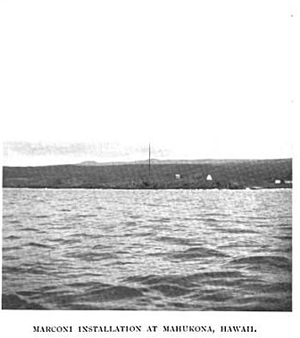
Wireless telegraphs of the time were true contraptions — spark-gap transmitters would crackle as a flash traveled from one side to the other, like something out of a Frankenstein movie, sending Morse code through the antenna into the air as radio waves.
But by 1902, a mere year after the completion of the network, Inter-Island Telegraph went out of business. Marconi's technology worked as promised, but the audience simply wasn't there — nobody wanted to pay the high price of "..two dollars for messages of not more than ten words." With inflation, that's $55 (or just imagine paying about $100 per tweet).
While Hawaiian messages merrily paddled along, technology roared ahead at a pace that rivals the modern day: In 1903 the Pacific Cable arrived in Honolulu, with Roosevelt sending the first wired telegraph message from the mainland to Honolulu. Marconi continued on to wrap his "wireless girdle" around mother earth with stations all around the globe. And in 1906 radio evolved from just dits-and-dahs to music and voice, with Reginald Fessenden performing Christmas songs and reading bible verse to ships in the Atlantic from his coastal home in Massachusetts (he generated so many sparks, he needed a water cooled microphone).
In the 1920's commercial AM radio blossomed throughout the United States, and by 1941 there were two successful commercial radio stations in Honolulu, KGU and KGMB, with KPUA (Hilo) and KTOH (Kauai) on the outer islands.
In November of 1941, another new radio innovation arrived, as multiple mobile radar stations were installed on the island of Oahu. Radar was a brand new technology, and installation in Hawaii was still ongoing — three more powerful radar towers destined for Hawaii were sitting on the pier in San Francisco. These radar stations was controlled by the Army Signal Corps, and not under Naval Air Forces, as it was caught in an interagency turf battle and designated in "training mode".
At 7am that Sunday, radar operators noticed what seemed to be fifty planes heading towards the islands, but senior officials believed this to merely be an expected group of twelve B-17's stopping in Hawaii before continuing to the Philippines, and instructed the operators "not to worry about it."
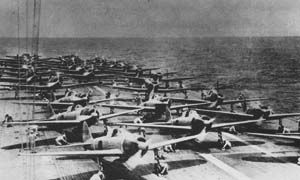
The radio stations back then didn't broadcast 24 hours a day, but they sometimes broadcast for additional hours at the request of the Navy to serve as a beacon for incoming flights, as they did in those early morning hours before my Dad gathered his hunting supplies, and my Mom trailed, bleary eyed, behind her big brother Carl through the morning dew to the coffee land.
Those same commercial radio towers carrying KGMB throughout the islands that morning also carried the attackers, as the Japanese pilots used the local radio signal to gauge their silent approach to the city. The number one song of the day, "Chattanooga Choo Choo" by Glenn Miller (who remains missing in action today) may have been the brassy, rattling siren song as the planes dropped beneath the clouds.
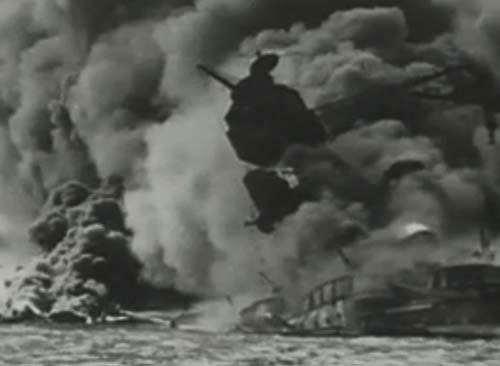
150 miles to the east of Pearl Harbor, my Dad and his friend returned home pheasantless after hearing the news on the radio in his borrowed '31 Plymouth (he was only fourteen at the time, but had already been driving around town for years). My Mom's family hears the news on their radio, and returns to the fields to continue to work -- money has always been tight and this was certainly no reason to stay at home. Bad news travels fast, and via the power of radio the outer islands learn of the attack within the hour.
A second wave of attack, arriving about an hour after the first, includes Japanese Airman First Class Shigenori Nishikaichi, age twenty-one, piloting a Mitsubishi A6M2 Zero. Although still reeling from the surprise attack, American forces retaliate with heavy anti-aircraft fire and pilots scramble to dogfight in the remaining American planes.
Radio stations around the country begin to interrupt their local broadcast with news of the attack. Honolulu station KGU calls out via telephone to the national NBC network to describe the destruction, and the death toll that will eventually reach over two thousand, and over another thousand injured.
Nishikaichi's fuel tanks on his Zero are damaged, and he is forced to crash land — out of fuel, engines off and gliding — 150 miles west of Pearl Harbor, on a small island with many sheep, little water, fewer people, and, critically, no electricity.
From Zero to 9066
The Japanese Mitsubishi A6M2 "Zero" was perhaps the finest fighter of its day. The Zero had flown in attacks against China and had proved so superior to the American and Russian built planes of the Chinese Air Force that the Chinese pilots were told to avoid direct confrontation with The Zero — just get the hell away.

Although nine Zeros were shot down that Sunday, very little remained for analysis and tear down to design counter measures. US analysts believed it's purported capabilities were "an aerodynamic impossibility". The Zero was very agile and lightweight — due to omitting armor for the pilots, not using self-sealing fuel tanks and lightweight integrated wings. In the earliest months of the war, contemporary Allied planes seemed to simply be outmatched.
Nishikaichi landed on the island of Niihau, the western-most of the major islands, privately owned by the Robinson family (not a Swiss family, but a Scottish/New Zealand family). The island was primarily a ranch, where the few hundred residents spoke Hawaiian, and access by outsiders was careful guarded, earning the nickname "The Forbidden Isle".
Without electricity and limited access to radio, islanders are completely unaware of the attack earlier that morning, and they help Nishikaichi from his plane, smartly taking his papers and firearms, but are mostly worried about getting in trouble with the Robinsons for their uninvited guest.
The Japanese emergency plan was to await rescue by submarine. That afternoon the pilot joins the locals for a hearty dinner luau, singing songs in his native tongue. Nishikaichi is able to converse with the three Niihau residents of Japanese heritage (by contrast, on the rest of the islands Japanese immigrants made up almost half of the population, greater in number than the population of all Japanese immigrants on the US mainland). The pilot informs them about the attack, a fact they choose to keep from the others.
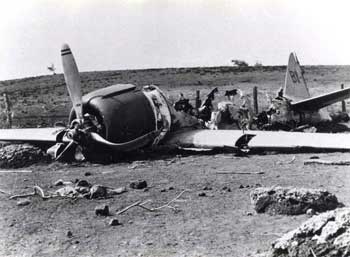
The Hawaiians of Niihau learn of the Japanese attack via a battery-powered radio later the same evening, and decide that the pilot will be held by guards, and handed over when officials arrive. There isn't a transmitter on the island, so there is no way to inform officials, or the Robinsons who live on nearby Kauai, about the Japanese pilot. Niihau residents Yoshio and Irene Harada (both born in Hawaii of Japanese parents) are sympathetic to the young pilot's plight, and offer to detain him at their home.
By Friday, December 12th, it's clear that no rescue submarine is coming, and Nishikaichi attempts to bribe locals for the return of his papers, a valuable intelligence asset. When his $200 bribe is refused, the Harada's help him retrieve his weapons and terrorize the Hawaiians for the return of the documents, firing the machine gun on his Zero at the villagers, before attempting to set the plane ablaze.
On Saturday morning, seven days after his crash landing, Nishikaichi and Harada take Ella Kanahele hostage, and demand her husband Ben Kanahele find the man who originally confiscated the papers, Hawila Kaleohano. Kaleohano is gone, having left the night before on a lifeboat to get help from Kauai, a ten-hour voyage away, and Ben pretends to look for him.
As an exhausted Nishikaichi hands the rifle to Harada, Ella and Ben take the opportunity to attack, jumping on the pilot, with Ben getting shot three times by the pilot's pistol. Ben manages to pick up Nishikaichi and throw him against a stone wall, and Ella smashes the pilot's head with a stone. Harada, realizing the gravity of the situation, turns the shotgun upon himself, committing suicide.
Ben Kanahele received the Medal for Merit and a Purple Heart (Ella received no official recognition), and Irene Harada served over two years in prison (although not formally charged with treason).
In the official Navy report written a month later, the incident "...indicate(s) likelihood that Japanese residents previously believed loyal to the United States may aid Japan if further Japanese attacks appear successful."
On February 19, 1942, President Roosevelt signed Executive Order 9066, authorizing the deportation of Japanese Americans to internment camps.
It's poetic to point to this tale of the tangled loyalties of a husband and wife as the turning point of US beliefs about Japanese Americans, or as a key influence on federal decisions made about internment. But the die had been cast long before, as fear of sabotage by Japanese Americans actually led to the very configuration of ships and planes that proved so costly on Sunday morning:
"In Pearl Harbor, what they prepared for were things that really didn't happen," Rumsfeld said. "They prepared for sabotage because they had so many Japanese descendants living in Hawaii. And so they stuck all the airplanes close together, so they could be protected. So of course the bombers came and they were enormously vulnerable and they were destroyed." — Donald Rumsfeld in Nate Silver's The Signal and The Noise (2012).
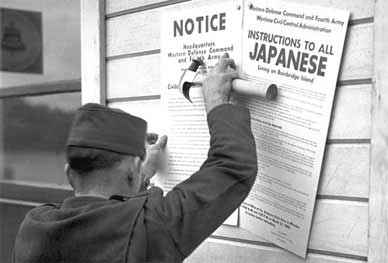
Hostilities against Asian immigrants (or "Mongoloids"), had been festering on the west coast for years. In 1869, when the completion of the inter-continental railroad left unemployed Chinese laborers flooding a poor job market, activism by labor unions and political parties eventually led to a law prohibiting Chinese immigration and nationalization in 1882.
In the early 1900's groups such as the Japanese Exclusion League and the Anti-Jap Laundry League, began to grow in California, organizing and lobbying white citizens (often European immigrants) to boycott Japanese businesses, to support school segregation (with San Francisco banning Asian students from white schools in 1906), and to support a Constitutional amendment to ban citizenship "unless both parents were of a race eligible for citizenship." The Democratic, Republican and Socialist parties in California all adopted formal anti-Japanese platforms.
The Japanese are starting the same tide of immigration which we thought we had checked twenty years ago...The Chinese and Japanese are not bona fide citizens. They are not the stuff of which American citizens can be made.
—San Francisco Mayor James Duval
The story of Nishikaichi's Zero and Yoshio and Irene Harada took a week to cresendo to a conclusion, but organized, racist hostility against Japanese Americans had been simmering on the west coast for over forty years.
Blackout

In the days and weeks that followed Pearl Harbor, Hawaii was deemed a war zone, with the very realistic concern of an imminent Japanese invasion. The islands were placed under martial law, with a strict 6pm to 6am curfew. All mail, in and out, was subject to review and censor; currency was altered with specifically printed bills; citizens were required to obtain and carry a military ID card, being caught without one was grounds for arrest. At night blackout rules were in effect, any glow from your windows, whether radio dial, kitchen stove or time machine could get you arrested. My Mom remembers sealing the gaps between the boards of their house to try to keep the light inside at night, not an easy task as the island homes hardly needed to be air tight in the tropical weather.
Unlike Japanese Americans on the mainland, there were very few Japanese Americans in Hawaii sent to internment camps (fewer than 2,000, compared to 120,000 on the mainland), with most being men in leadership roles in Japanese schools, churches and organizations. The Kilauea Military Camp, built practically on the edge of an active volcanic crater, served as the Big Island's internment and prisoner of war camp (and now serves as a vacation spot for military members).
The Wireless Future
The speed and richness of communication kept accelerating, and evolving. The old spark gap telegraph was replaced with vacuum tubes by the twenties. Telegraphs were first replaced by the ubiquity of the telephone, then finished off by the internet.
Radio and newspapers remained the dominant news format through the war, as virtually all television broadcasts were halted. Television sales started to take off in the 1950's, bringing the news of the world into living rooms across the country in black and white.
Hawaii would continue to play a leading role in wireless, with the development of ALOHANet in the 1970s at the University of Hawaii as a precursor to modern WiFi. Today, all the way at the top of the island, staring down at the old Marconi transmitter site below, a radio receiver array sits listening for signals from deep space, next to giant telescopes looking through the universe and back in time.
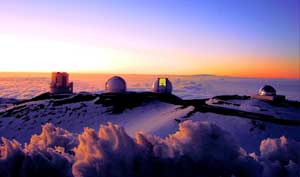
In Thin Air
Bad news travels fast, but the worst news travels deliberately, with certainty.
My mother's older brother Carl Goro Matsuda dropped out of school to enlist, and became a member of the 442nd regimental combat unit. The 442nd, mostly comprised of Japanese Americans, became the most decorated infantry unit in history, fighting in brutal battles across Italy, France and Germany.
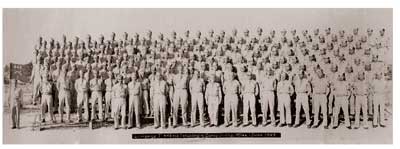
Carl survived the first three weeks of battle, moving from Rome to the town of Castellina, about 20 miles south of Florence, under heavy German fighting.
From Castellina to the Arno river, a distance of only 40 miles, the 442nd met constant, brutal opposition and lost 1,272 soldiers, with 239 killed — Carl fell victim to a snipers bullet at age 20.
The news of Carl's passing traveled around the world, from the bloodied Tuscan hills and medieval castles back to the rock in the middle of the giant ocean. The news traveled its last mile not delivered by Western Union nor by fancy new technology, but the same way messages traveled since the beginning of civilization, in person, by two uniformed officers, solemnly delivered by hand.
My grandfather was riding the bus with another son, Paul, to see him off to join the Military Intelligence Service, when he was sent home and learned the news of Carl's passing.
Months later, my Mom recalls the arrival of Carl's personal effects: a bloody wallet, reeking of death, and the name of a mystery girl nobody knew, Betty Ono of Mississippi, tucked inside. Mom recalls her parent's trip, a few years later, to bury his ashes, with his dog tags, at the military cemetery on Oahu. Her last letter to her big brother — which he read, and he saved and carried with him in his wallet — also turned to ashes, and his last response lost invisibly, inevitably, in thin air.
Additional References:
Books:
Paul East Wind, Rain; Reardon Koga's Zero
Silver The Signal and The Noise
Links:
The Niihau Incident
Air and Space Magazine
The Zero National Museum of the Air Force
Japanese American sentiment before the war National Park Service
Glenn Miller Chattanooga Choo-Choo
Pearl Harbor A Timeline from National Geographic
 gravitymonkey
gravitymonkey